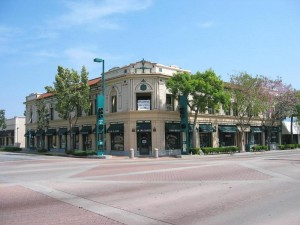As the magicians in Sacramento look for ways to close our state budget shortfall, they may have opened the door relating to redevelopment agencies that the average voter may not fully comprehend. As such let me provide some information from our booklet entitled “Redevelopment-The Unknown Government.”
“Once a redevelopment project area is created, all property tax increment within it goes directly to the agency. This means all increases in property tax revenues are diverted to the redevelopment agency and away from the cities, counties (special districts) and school districts that would normally receive them.
While inflation naturally forces up expenses for public services such as education and police, their property tax revenue within a redevelopment area are frozen. All new revenues beyond the base year can be spent only for redevelopment purposes.” Reading further. “Once an agency is disbanded, all the new property tax revenues would be restored to locals governments. Legally agencies are supposed to sunset after 40 years, but the law contains many exceptions and is easily circumvented. Tougher sunset legislation is needed to close agencies at a predetermined date. Only then will property tax diversions end and the funds restored to the public.”
Let me repeat that “part of the tax increment that would have gone to a city’s general fund is lost and can now be used by redevelopment agencies. Thus there is now money to build auto malls and hotels but less for police, firefighters, (special districts) and librarians. Cities cannot use redevelopment money to pay for salaries, public safety, (pensions), or maintenance, which by far represent the largest share of municipal budgets.”
Now let’s look at the city of Industry where two CA Republican Senators, Dennis Hollingsworth and Robert Huff, are supporting an extension of the City of Industry’s RDA by upwards of 40 years so that Industry can continue milking their “cash cow.”
To show how much money we are addressing let me confirm that the City of Industry, whose total population is less than 1,000, had a total indebtedness of nearly $1.5 billion dollars. Source. Community Redevelopment Agencies Annual Report, Fiscal Year 2005-2006 State Controllers Office.
Ed Roski, Jr, Chairman, Majestic Realty, and developer of the Staples Center in downtown LA, wants to lure an NFL franchise to this area. Let me point out that Majestic Realty is based in the City of Industry. The proposed NFL site is near the intersection of the 60 and 57 freeways.
In the League of California Cities update I found the following confirmation on the above redevelopment agency extension agenda.
Note: The link to this report appears at the end of this report.
“An alternative proposal sponsored by the city of Industry, that faces both political and legal challenges, would allow RDA project timelines to be extended for 30-40 years. In exchange, RDA’s would be required to give the state 10 percent of revenues which the state would securitize. There are a variety of hybrid versions of this proposal also being discussed. (If this proposal is accepted, the concept is to limit other budget hits to local government.”
“Redevelopment-The Unknown Government” booklet is written and published by Municipal Officials for Redevelopment Reform, MORR in conjunction with its “grass roots” partners, Californians United for Redevelopment Education, CURE.
Larry Gilbert, Orange County Co-director, CURE

These rules help contribute to our growing economic problems in the state, they encourage the building of retail,casinos, resorts and hotels at the expense of other better paying jobs. They also strip funding from schools.
This type of development policy is to me exactly backwards of what it should be and very different form what other state are doing.